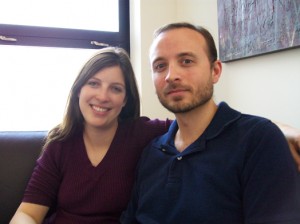Lotus Birth: Trend or Risk
This is an interesting article about not cutting the cord after the baby’s birth. This is called, a ‘lotus birth’. When I broach the topic to some people they are disgusted. Others are fascinated and still others ask many questions. Read on and enjoy the information.
LOTUS BIRTHING: TREND OR RISK
BY MONICA ORBE/ MEDILL DEC 03, 2009

It raises questions about the practice of cord clamping right after birth and raises eyebrows in the medical community where many doctors contend this birthing practice poses unnecessary risks of infection. Lotus birthing means the baby’s cord is not immediately clamped or cut. The parents and their midwife instead opt to have the placenta remain attached to nourish the baby and let it fall off naturally.

During this period before it does fall off, parents clean, salt and wrap the placenta, usually in a cloth diaper. This option is not offered in hospitals and some hospitals don’t even allow the parents to take the placenta home.
People who have chosen lotus birthing said they believe that the placenta is providing the baby with nutrients and oxygen even after it separates from the uterus.
At the very least, they contend the clamping and cutting of the cord should only be done after the cord stops pulsating.
The immediate clamping and cutting of the cord as soon as the baby is delivered, the standard at hospitals, may deprive the baby of the ability to transition from a liquid-based environment to an oxygen-based environment, according to supporters of delayed clamping.
American obstetrician Dr. George M. Morley is considered a champion of delayed cord clamping. Morley’s argument for the delay is that cutting before the umbilical cord has stopped pulsating could mean that the baby is being deprived of oxygen and nutrients. If a child becomes hypoxic (it lacks oxygen) and ischemic (lacks blood flow), Morley believed the child could be placed at greater risk of brain damage.
 The argument for delayed cord clamping is often used as a springboard for those who believe in lotusbirthing, a more extreme version of delayed cord clamping.
The argument for delayed cord clamping is often used as a springboard for those who believe in lotusbirthing, a more extreme version of delayed cord clamping.
Some doctors are becoming more accepting of delayed cord clamping, but they criticize the idea of lotus birthing methods.
High risk obstetrician Dr. Mara Dinsmoor questions the safety of both delayed cord clamping and lotus birthing. “The concerns are that, because there is quite a bit of blood in the placenta, you may end up with a baby whose blood count is too high from doing that,” she said.
She said that too much blood in the baby’s system due to the delayed clamping has been known to cause blood clots and sludging in the baby’s organs, which could result in damage to those organs. She also said that carrying the placenta around could be a “potential infectious risk.”
Dinsmoor also said that she believes lotus birthing may not really be of any use. “Fairly soon after the baby is born those umbilical vessels…basically are obliterated. So you are not getting anything really good from the placenta through those umbilical vessels,” she said.
But, lotus birthing is gaining popularity because women choosing to take more control of their pregnancy are asking questions and turning to the Internet for answers.
Chicago attorney Leonard Hudson and his wife Gayle Hudson, a stay-at-home-mother, said they discovered lotus birthing on a Web site.
Gayle Hudson said she had only one priority: “What is going to give [my baby] the best start in her life? And I thought – the least amount of drugs, the least amount of stress.”
Hudson said her fear of having a birth in an environment where she felt doctors and nurses see birth as surgery, made her choose home birth. After making this decision, her mind turned to more alternative birthing methods and she found and researched lotus birthing.
After about three days of carrying around their baby with the placenta attached, the Hudson’s decided it was time to cut the cord. Gayle Hudson said the placenta had become unwieldy and the couple feared their child would get tangled up in it.
The Hudson’s urge other parents to take control of their birthing experience by educating themselves.
“Part of the organizing principle of our birth plan was the timing of it should be set by Gayle and the child,” letting nature take its course, said Leonard Hudson. ”So having the lotus birth was sort of a continuation of that.”
To see video of LOTUS BIRTHS: THE DEBATE By Monica Orbe with Medill Reports:
http://news.medill.northwestern.edu/chicago/news.aspx?id=151179
©2001 – 2009 Medill Reports – Chicago, Northwestern University.
A publication of the Medill School.

